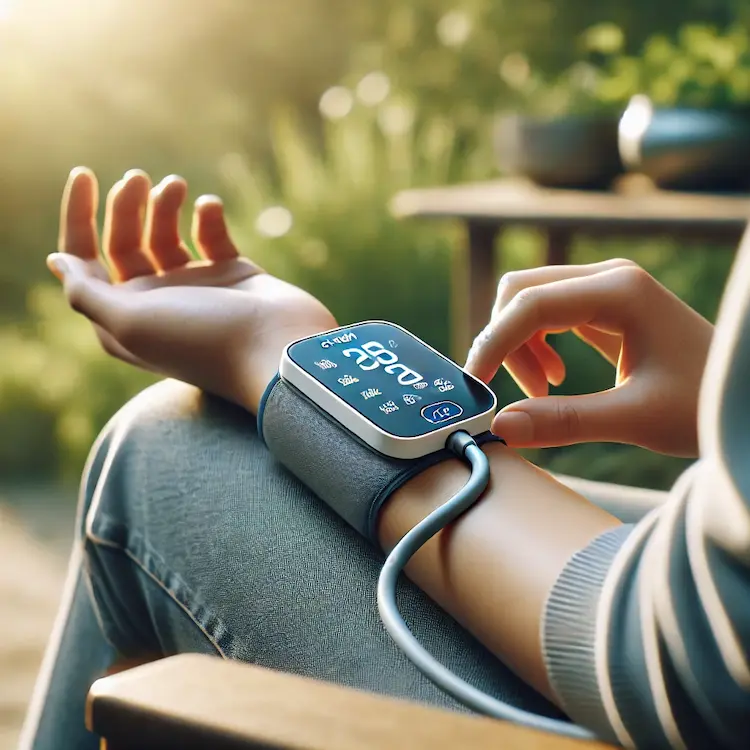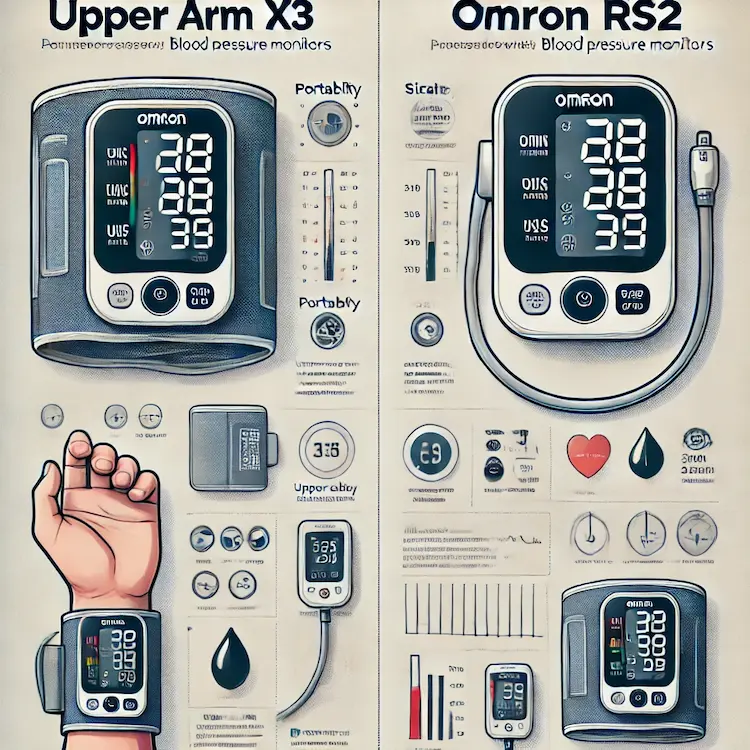Blood pressure monitoring is essential for individuals managing hypertension, heart disease, or other cardiovascular conditions. Portable blood pressure monitors provide users with convenience, flexibility, and real-time tracking of their readings. Among the most popular models from Omron, the Omron X3 and the Omron RS2 stand out. Both offer accuracy and ease of use, but which one is more portable?
This article provides a detailed comparative analysis of the Omron X3 vs. Omron RS2, evaluating their portability based on size, weight, usability, and transportability. We also discuss the significance of portable blood pressure monitors, potential health impacts, and provide expert recommendations.
Why Portability Matters in Blood Pressure Monitors
Portability in a blood pressure monitor (BPM) is crucial for individuals who travel frequently, work in high-stress environments, or need to monitor their blood pressure multiple times a day. A portable BPM offers:
- Convenience: Easily fits in bags or pockets.
- On-the-Go Monitoring: Enables real-time blood pressure tracking.
- Discreetness: Can be used without drawing attention.
- Better Compliance: Users are more likely to monitor regularly if it’s easy to carry.
According to the World Health Organization (WHO), 1.28 billion adults worldwide suffer from hypertension, with 46% unaware of their condition. Portable BPMs play a crucial role in early diagnosis and self-management.

Comparison: Omron X3 vs. Omron RS2 in Portability
Size and Weight Comparison
Size and weight are critical factors when determining portability. Below is a comparison of both models:
| Feature | Omron X3 (Upper Arm) | Omron RS2 (Wrist) |
|---|---|---|
| Device Type | Upper arm monitor | Wrist monitor |
| Dimensions | 10.5 × 15 × 8.5 cm | 8.4 × 6.4 × 2.4 cm |
| Weight (without batteries) | 460g | 105g |
| Cuff Size | 22-42 cm | 13.5-21.5 cm |
Key Takeaway: The Omron RS2 is significantly smaller and lighter, making it easier to carry in a purse or pocket compared to the bulkier Omron X3.
Ease of Use and Transportability
Portability isn’t just about size; it also involves usability.
- Omron X3: Uses an upper-arm cuff, which provides accurate readings but requires a stable surface or proper arm positioning.
- Omron RS2: Uses a wrist cuff, which can be used anywhere—even while standing—but might be more prone to inaccurate readings if the wrist isn’t correctly positioned.
| Feature | Omron X3 | Omron RS2 |
|---|---|---|
| Ease of Setup | Moderate | Very Easy |
| Use in Different Positions | Requires stable positioning | Can be used anywhere |
| Storage & Carrying Case | Yes, but bulkier | Compact and travel-friendly |
Key Takeaway: The Omron RS2 is easier to transport and use in various situations, whereas the Omron X3 is less travel-friendly due to its need for a stable surface and larger cuff.
Power Source and Battery Life
A portable device should have an efficient power source for long-term use.
| Feature | Omron X3 | Omron RS2 |
|---|---|---|
| Battery Type | 4× AA | 2× AAA |
| Battery Life | ~1000 uses | ~300 uses |
| AC Adapter Compatibility | Yes | No |
Key Takeaway: The Omron X3 has a longer battery life, but Omron RS2’s AAA batteries make it lighter and more portable.
Potential Health & Societal Impacts
Using a portable BPM can significantly impact personal and public health:
- Encourages Self-Monitoring: A 2021 study in Hypertension Journal found that self-monitoring reduces cardiovascular risks by 20%.
- Early Hypertension Detection: Regular tracking helps detect spikes in blood pressure early.
- Reduces Hospital Visits: Studies indicate 15% fewer emergency visits for hypertensive patients using home BPMs.
With over 1 billion people at risk of hypertension complications, the accessibility of lightweight, travel-friendly monitors like the Omron RS2 could improve global hypertension management.
Practical Advice for Choosing a Portable Blood Pressure Monitor
Here are some tips for selecting the best portable BPM:
- Prioritize Size & Weight: If portability is your main concern, opt for compact wrist monitors like the Omron RS2.
- Consider Accuracy Needs: Upper-arm monitors like the Omron X3 offer higher accuracy, making them ideal for medical-grade readings.
- Check Battery Requirements: Ensure battery longevity suits your lifestyle—Omron X3 lasts longer, while RS2 is lightweight.
- Evaluate Usability in Different Environments: If you need quick, on-the-go readings, a wrist monitor is more practical.
- Look for Extra Features: Features like Bluetooth connectivity (available in some Omron models) enhance usability.

Conclusion
While both Omron X3 and Omron RS2 are high-quality blood pressure monitors, their portability differs significantly.
- The Omron X3 provides greater accuracy and longer battery life but is bulkier.
- The Omron RS2 is smaller, lighter, and easier to use in different locations, making it the better choice for portability.
Key Takeaways
- Omron RS2 is the most portable due to compact size and lightweight design.
- Omron X3 is more accurate but less travel-friendly.
- Battery efficiency favors Omron X3, but RS2’s AAA batteries keep it light.
- For frequent travelers, RS2 is ideal; for home use, X3 is better.
Actionable Recommendations
- If you need a travel-friendly option, go for Omron RS2.
- If accuracy is your top priority, choose Omron X3.
- For frequent use, ensure your BPM has a carrying case.
- Position correctly for accurate readings, especially with wrist monitors.


